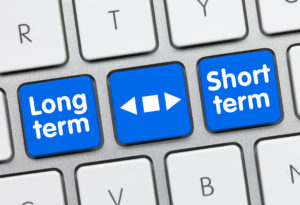The total return on Vanguard’s Canadian Long-Term Bond Index ETF (VLB) since 2020 October 27 is a painful loss of 24%. Why did I choose that particular date to report this loss? That’s when I wrote the article Owning Today’s Long-Term Bonds is Crazy.
Did I know that the Canadian Long-Term bonds returns would be this bad over the past 18 months?
No, I didn’t. But I did know that returns were likely to be poor over the full duration of the bonds. Either interest rates were going to rise and long-term bonds would be clobbered (as they have), or interest rates were going to stay low and give rock-bottom yields for many years. Either way, starting from a year and a half ago, long-term bond returns were destined to be poor.
Does this mean we should all pile into stocks?
No. If you own bonds to blunt the volatility of stocks, you can choose short-term bonds or even high-interest savings accounts. This is what I did back when interest rates became low.
Does that mean everyone should get out of long-term bonds?
It’s too late to avoid the pain long-term bondholders have already experienced. I’m still choosing to avoid long-term bonds in case interest rates rise more, but the yield to maturity is now high enough that owning long-term bonds isn’t crazy.
Isn’t switching back and forth between long and short bonds just a form of active management?
Perhaps. But it’s important to understand that bonds and stocks are very different. Stock returns are wild and impossible to predict accurately. There is no evidence that anyone can reliably time the stock market. However, when you hold a (government) bond to maturity, you know exactly what you will get (in nominal terms). When a long-term bond offers a yield well below any reasonable guess of future inflation, buying it is just locking in a near-certain loss of buying power for a long time. Continue Reading…






